Dedicated to
St. Sergius of Radonezh
The song to Shambhala
website
of Alexey Smirnov
There are many articles, which have been written about the canvasses of Nicholas Roerich (Николай Константинович Рерих). Some of them attract special attention. “The Song to Shambhala” (1943) applies to such paintings; by the way it is commonly known as “The song about Shambhala”. The meanings of these names are quite similar, but I decided to use the name, that was given by H. I. Roerich, who was both wife and fellow companion to Nicholas Roerich. Although, as you see from the quotation cited below, the creativeness of the singer includes not only the song to Shambhala, but also the song Shambhala as well as the song about Shambhala.
Alexey Smirnov
"The song to Shambhala"
of Nicholas Roerich
This section containes
following matelials:
following matelials:
The mountain ridge Tangla geographically separates Tibet and China. The Central Asian expedition that was organised by N. K. Roerich, in which H. I. Roerich and their son, Yuri took part, arrived there in autumn, 1927 on their return journey. They spent a severe winter in the Tibetan territory every day watching Tangla. During his life Nicholas Roerich (1874-1947) gave significant attention to Tangla in his work: he painted five canvasses dedicated to Tangla, including that (1929), on the base of which he created the symbolic painting “The song to Shambhala”. You can see these canvasses below.
Alexey Smirnov
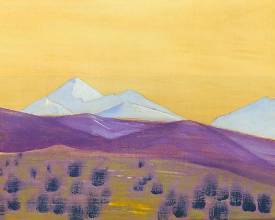
The pass Tangla, 1927
In a private collection
canvas, tempera
21sm х27sm
canvas, tempera
21sm х27sm
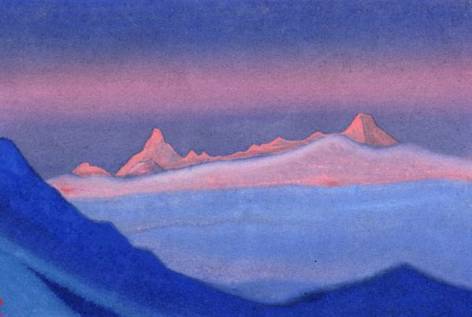
Tangla, 1943
The state Museum of Art of peoples of the East, Moscow
canvas, tempera
30 sm x 45 sm
30 sm x 45 sm
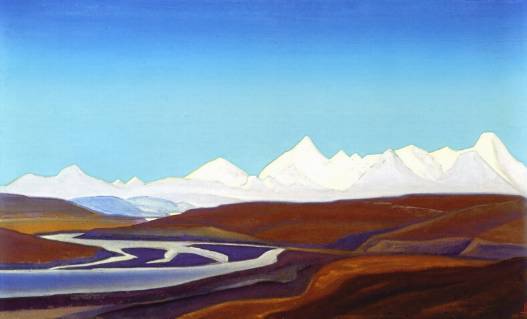
The Holiest Tangla, 1939
The state Museum of Art
of peoples of the East, Moscow
canvas, tempera
48 sm x 79 sm
of peoples of the East, Moscow
canvas, tempera
48 sm x 79 sm
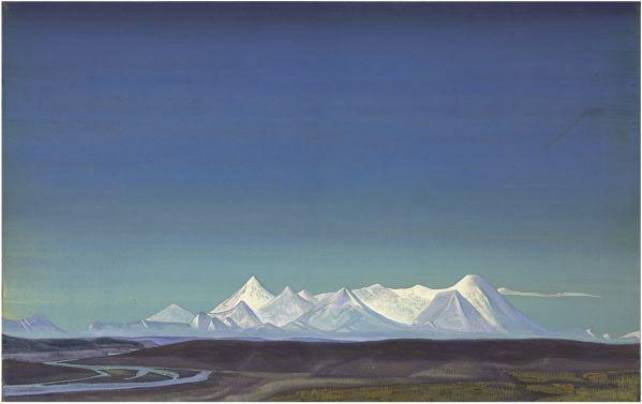
The Greatest
and
Holiest Tangla,1929
Holiest Tangla,1929
The International Centre-Museum by the name of N. K. Roerich, Moscow
canvas, tempera
73,7 sm x 117,5 sm
canvas, tempera
73,7 sm x 117,5 sm
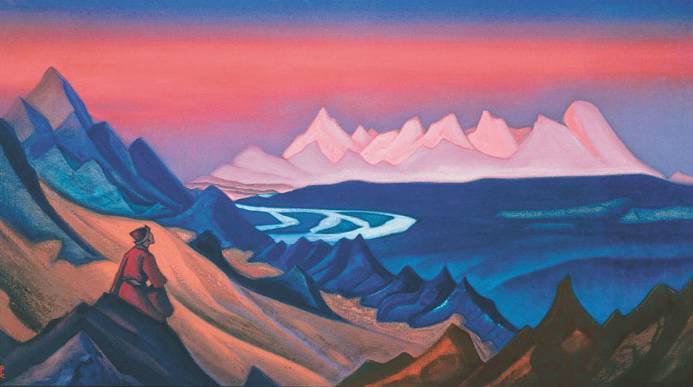
“One of the last imprintings of his Dream, his love, “The song to Shambhala”, will stay with me. In the background of the grand sunset the Sacred Ridge glitters in the distance, illuminated by the last ray; the impassable area spreads out behind it, surrounded by snow giants. The Singer, as he is, sits on the dark purple crag… The whole meaning of his life, his aspirations, his creativeness, his knowledge and great service is imprinted in this song of Shamhala and about Shambhala”.
Helena Roerich
9 April 1948
Nicholas Roerich
"The song to Shambhala"
1943, canvas, tempera, 76,2 sm x 137,2 sm
“Dear relatives, I am dreaming to work with You, as who else will understand and feel deeply the whole innermost mission of Our Bright and Beloved one, his service to the whole mankind. Verily, he outgrew the planetary magnitudes, and his aspirations were already directed in starlit spaces, where creativeness is not limited by our tri-dimensional measurement. While the present becoming wild and the last remnants of cultural achievements of a great past are being demolished, while all the distinctive, all the beautiful, is being levelled, his figure towered above as tense REPROACH and a last Symbol of the Creator and Singer, aspired to Boundless Beauty, Eternal Beauty. Verily, the world became an orphan without him. The exhibition of his paintings gathered tens of thousands of visitors and raised their vibrations in enthusiastic perception of the wonderful colours and Images, which were close to them. Many kept for a long time the memory of that miraculous lifting of their spirits. So much blessing was vented with such effect. Who knows how many people left, cured from the early stages of a wicked illness, and forgot about heavy offence or bad intention – while under the influence of new vibrations and new thoughts”.
Both cited extracts were taken from the letter of Helena Roerich, written on 9 april 1948 at Mandi House and addressed to Dudley and Zinaida Fosdick, managers of the Nicholas Roerich Museum in New York.
Edited by Jenny Neve
12 April 2016
Marks: The song to Shambhala, Николая Константинович Рериха, Nicholas Roerich, The Greatest and Holiest Tangla, The song about Shambhala, The Holiest Tangla, The pass Tangla, Helena Roerich, Dudley and Zinaida Fosdick, Alexey Smirnov
© Alexey Borisovich Smirnov, 2021
novoruss.ru@gmail.com or elenalexey.smirnov@gmail.com
novoruss.ru@gmail.com or elenalexey.smirnov@gmail.com

